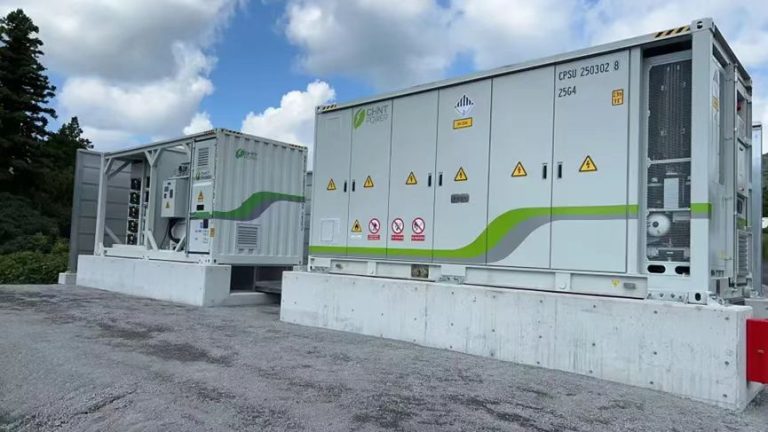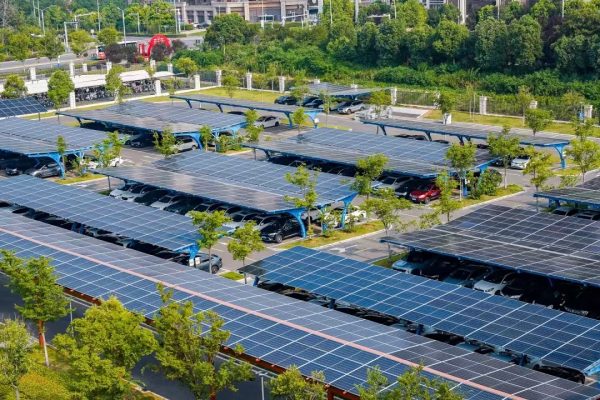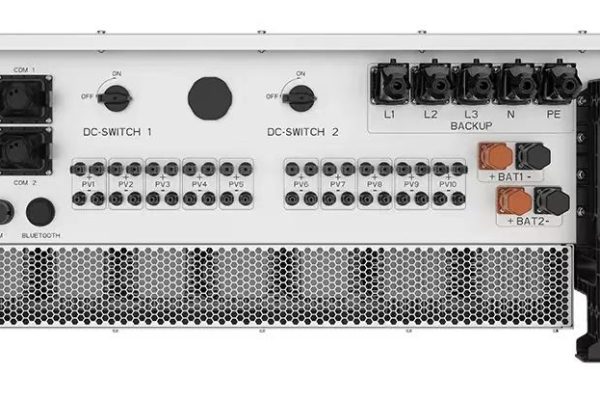In the past few years, industrial parks across Asia, Europe, and the Middle East have faced the same challenge: unstable grid conditions, rising electricity costs, and tightening demand charges. These pressures are driving a growing need for modular commercial and industrial (C&I) energy storage systems designed for peak shaving and load management.
Unlike traditional centralized systems, modular energy storage offers flexibility, scalability, and faster return on investment — all crucial for facilities that operate in dynamic load environments.
This article introduces a replicable modular storage architecture, explores a real industrial park case, and highlights key technical insights that make the solution reliable and efficient.
1. A Replicable Modular Architecture for Peak Shaving
A common mistake in designing C&I energy storage is overcomplication — too many subsystems, custom-built containers, and software that requires deep customization for each site. In contrast, a modular architecture simplifies deployment and ensures consistency.
Core Concept
- Standardized Battery Modules (50–100 kWh each)
Easily connected in series or parallel to reach required capacities (e.g., 250–1000 kWh). - Modular Power Units (PCS + EMS-integrated)
Each unit can operate independently or in parallel, reducing system downtime. - Flexible Control Layer
A unified EMS platform that coordinates all modules for peak shaving, backup, and tariff optimization.
Such modular systems can start small — for example, a 250 kWh / 125 kW setup — and expand over time as energy demand grows. This scalability is key for industrial parks where tenants change or production capacity fluctuates.
2. Case Study: 500 kWh Modular Energy Storage in a Precision Manufacturing Park
Background
A precision equipment manufacturing park in Southeast Asia was facing high monthly demand charges due to peak-hour loads from CNC machines and cooling systems. The facility’s total contracted capacity was 1.2 MW, with demand peaks frequently exceeding 1.1 MW, leading to penalties and unstable voltage.
The Challenge
- Demand peaks occurring twice daily, lasting 15–30 minutes
- Limited space and budget for a large centralized system
- Need for short installation time and minimal disruption
The Solution
A 500 kWh modular C&I storage system was deployed, consisting of:
- Five 100 kWh LiFePO₄ battery cabinets, each with independent BMS
- Two modular PCS units (50 kW each) operating in parallel
- Local EMS with cloud monitoring and predictive scheduling
The system was configured to perform automatic peak shaving during the park’s peak demand hours (10:00–11:00 and 15:30–16:30).
Results
Within the first three months:
- Peak demand reduced by 18%
- Monthly electricity cost decreased by 9–12%
- System uptime maintained at 99.8%
The modular design allowed one PCS unit to undergo firmware updates while the other continued operating — demonstrating true redundancy and service continuity.
3. Technical Highlights: Why Modular Works Better for Industrial Parks
a) Reliability Through Redundancy
Each module operates semi-independently. If one PCS or battery unit fails, others continue supplying power. This contrasts with monolithic systems, where a single inverter failure can disable the entire system.
b) Simplified O&M
Modular systems simplify maintenance:
- Hot-swappable modules
- Easy firmware updates
- Predictive fault detection via EMS analytics
This is particularly valuable for EPC contractors managing multiple sites with limited technical staff.
c) Scalable and Reusable Design
When a factory relocates or an industrial park undergoes restructuring, modular systems can be relocated and reused. Each 50–100 kWh module can be redeployed to new sites, maximizing asset lifespan and investment efficiency.
d) Faster Deployment
Pre-assembled battery modules and plug-and-play PCS units can be installed in less than two weeks for systems under 1 MWh. This shortens project payback periods and supports rapid market replication.
4. Integration with On-Site Renewables
While peak shaving is the core function, modular C&I storage can also integrate seamlessly with rooftop PV systems commonly found in industrial parks.
Through smart EMS scheduling, solar energy generated during the day is stored and used during evening peaks, achieving:
- Higher PV self-consumption
- Reduced grid dependence
- Lower demand charge penalties
Such hybrid PV + storage setups are particularly effective in regions with time-of-use (TOU) tariffs and incentive programs for distributed energy.
5. Lessons Learned from Small-Scale Deployments
From multiple pilot installations (200–1000 kWh range), several key insights emerged:
- Start with energy profiling – Peak shaving success depends on accurate load data. A one-month monitoring period before installation ensures proper system sizing.
- Keep software open and modular – Avoid proprietary EMS that locks the system to one vendor. Open communication protocols (Modbus, TCP/IP) enable future expansion.
- Plan for cooling and ventilation early – Thermal stability directly impacts battery life. Small parks often overlook HVAC design for storage rooms.
- Focus on maintainability – Technicians must be able to replace modules quickly without stopping operations.
These lessons form the foundation for a repeatable deployment model adaptable to different industrial environments.
6. Economic and Operational Benefits
| Key Metric | Typical Result from Modular C&I Projects |
|---|---|
| Peak demand reduction | 15–25% |
| Energy cost savings | 8–15% monthly |
| ROI period | 3–4 years |
| System uptime | >99% |
| Expansion flexibility | Add modules anytime |
(Data based on aggregated small-scale industrial park projects in 2023–2024)
These results demonstrate that modular peak-shaving systems not only lower operational costs but also enhance grid reliability — a growing priority for industrial developers and park operators.
7. The Future: Standardized “Energy Pods” for Industrial Parks
The next phase of modular energy storage is the Energy Pod concept — standardized 50–200 kWh plug-and-play units combining batteries, PCS, EMS, and thermal management in a single enclosure.
When deployed in clusters, these pods can function as a distributed energy node network, providing park-level energy balancing and emergency support.
Such systems pave the way for microgrid-level optimization without requiring massive upfront investment or complex interconnection approvals.
Modular C&I energy storage is redefining how industrial parks approach energy management. By focusing on replicable designs, real-world reliability, and operational flexibility, small-to-medium projects can now achieve significant peak shaving benefits without the complexity of large centralized systems.
This approach prioritizes long-term sustainability and scalability, making it ideal for EPC contractors, energy service providers, and facility operators seeking proven solutions that work — reliably, affordably, and efficiently.









